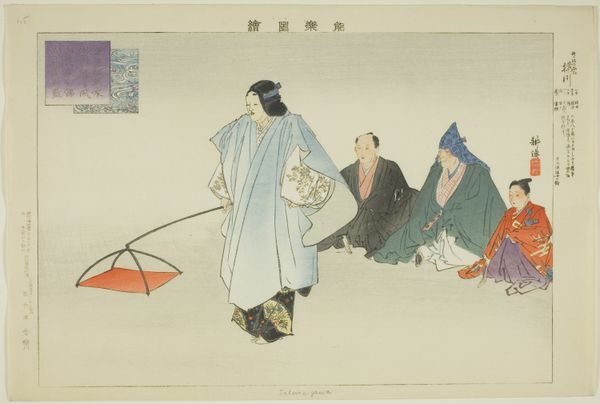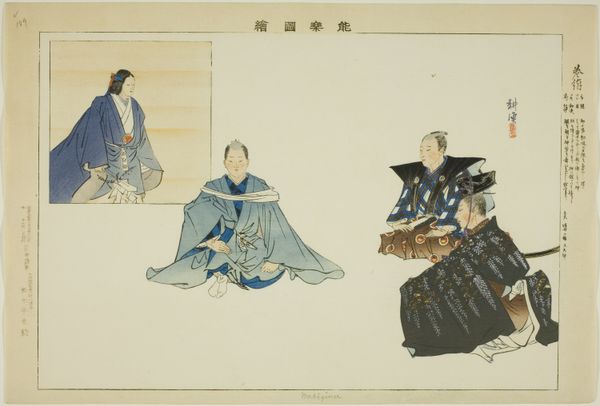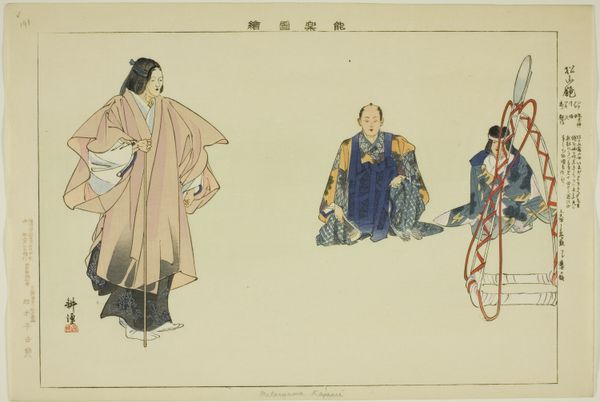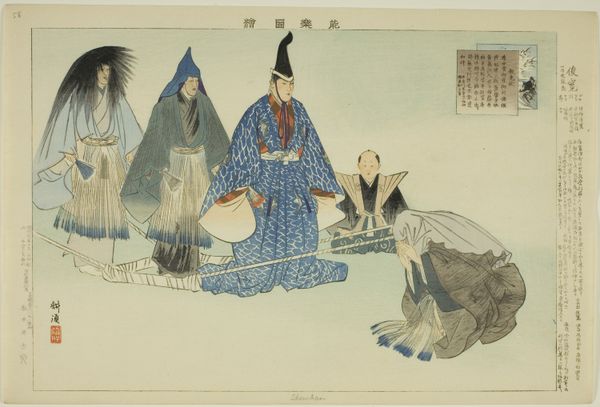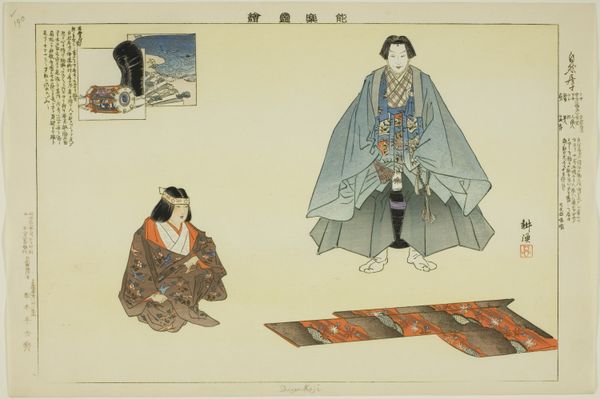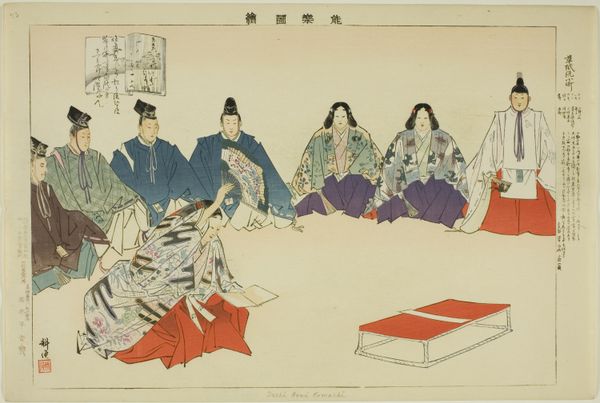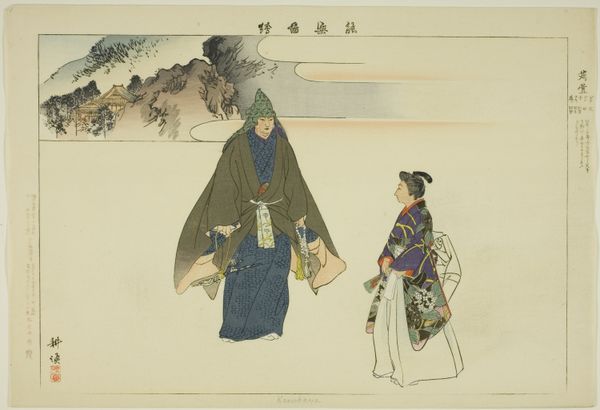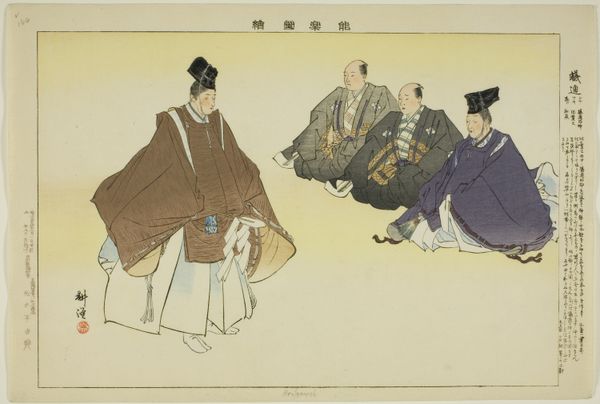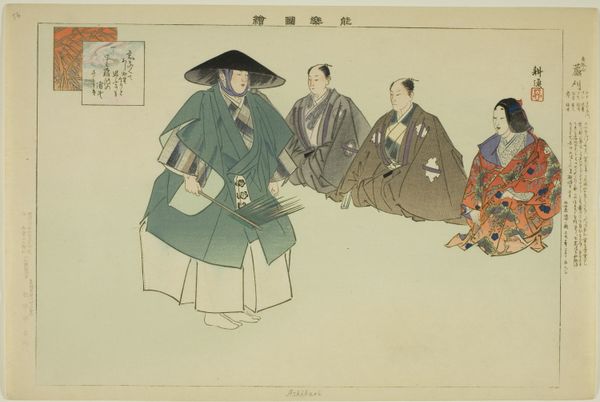
Sansho, from the series "Pictures of No Performances (Nogaku Zue)" 1898
0:00
0:00
Dimensions: Approx. 25.2 × 37.4 cm (10 × 14 4/3 in.)
Copyright: Public Domain
Tsukioka Kôgyo created this woodblock print titled "Sansho" sometime between the late 19th and early 20th century, a part of his series depicting scenes from Japanese Nô theatre. Here, we see three figures, each likely representing characters from the Nô play "Sansho." Nô theatre is characterized by its use of masks, costumes, and stylized gestures, all of which are laden with symbolic meaning. Notice how the attire and posture of each figure suggest different emotional states, and recall figures in classical dramas from around the world. The image of the waterfall in the corner connects to the concept of purity, but also the relentless nature of fate. Such symbols resonate beyond the stage; flowing water as an emblem of life’s journey has been reinterpreted across cultures and epochs, from ancient Greek philosophy to modern psychological thought. These images resonate due to humanity’s collective memory and the subconscious recognition of universal emotions, like sorrow and hope. The enduring nature of these themes invites us to reflect on how symbols retain their emotional and psychological impact across centuries.
Comments
No comments
Be the first to comment and join the conversation on the ultimate creative platform.
